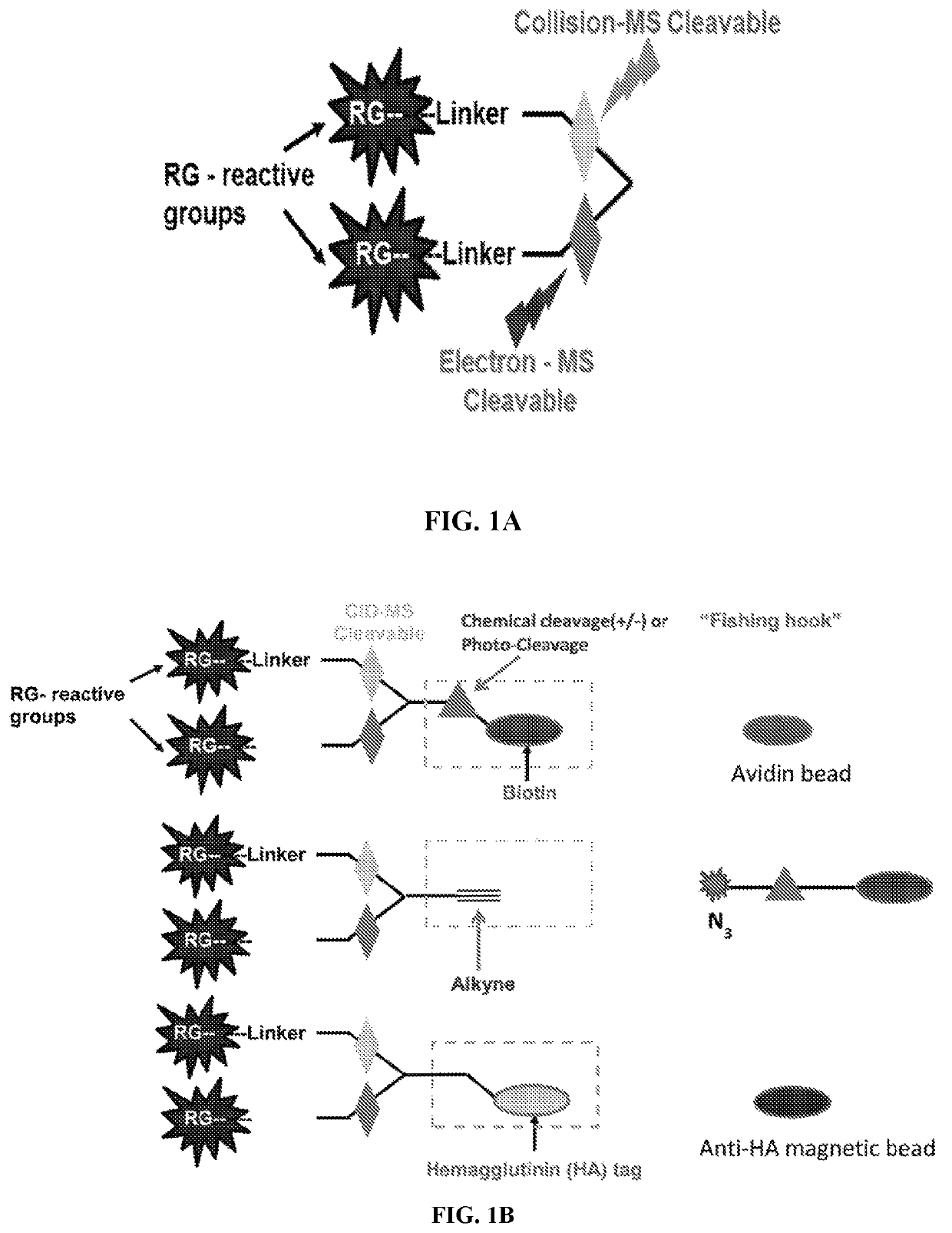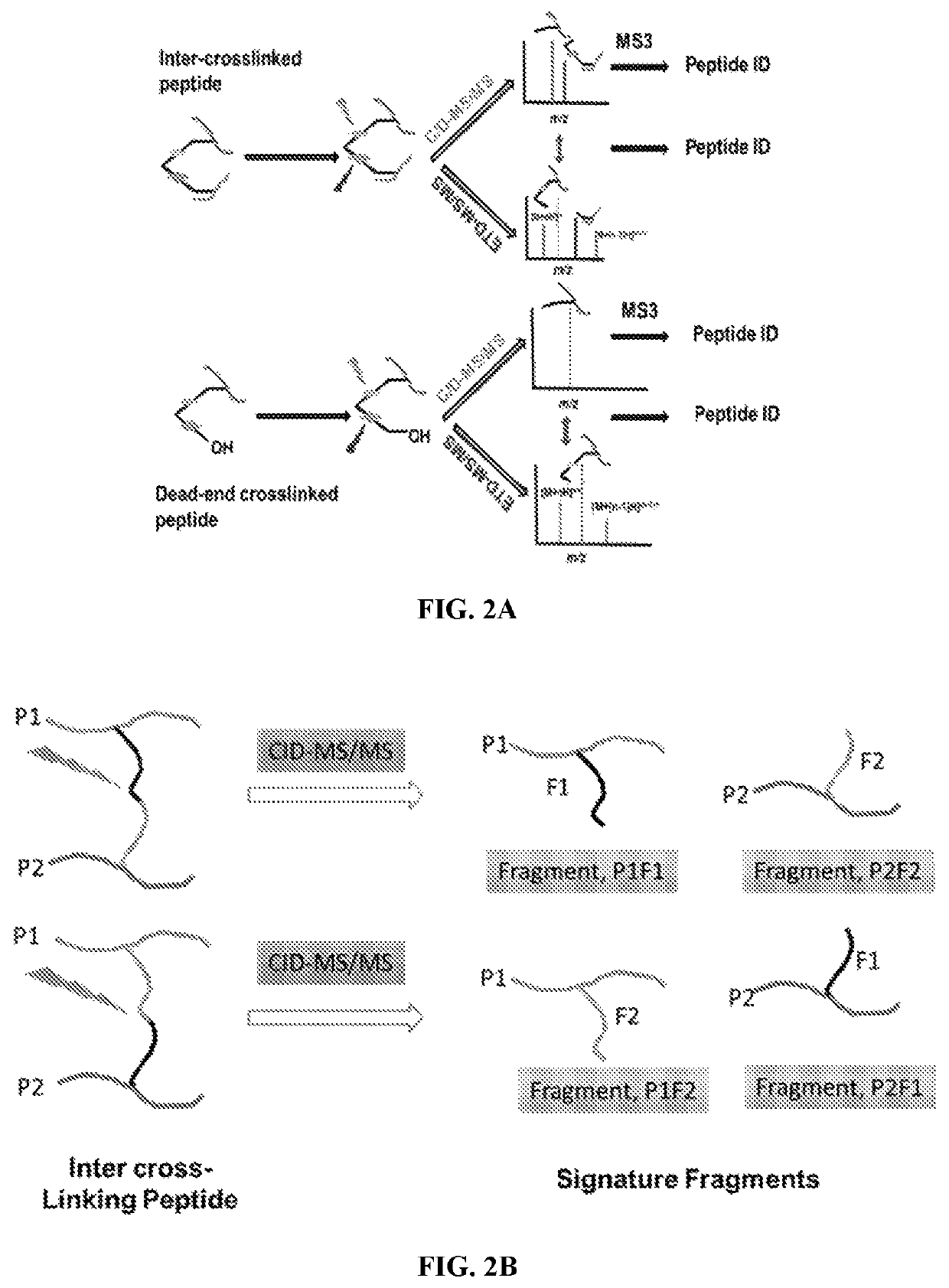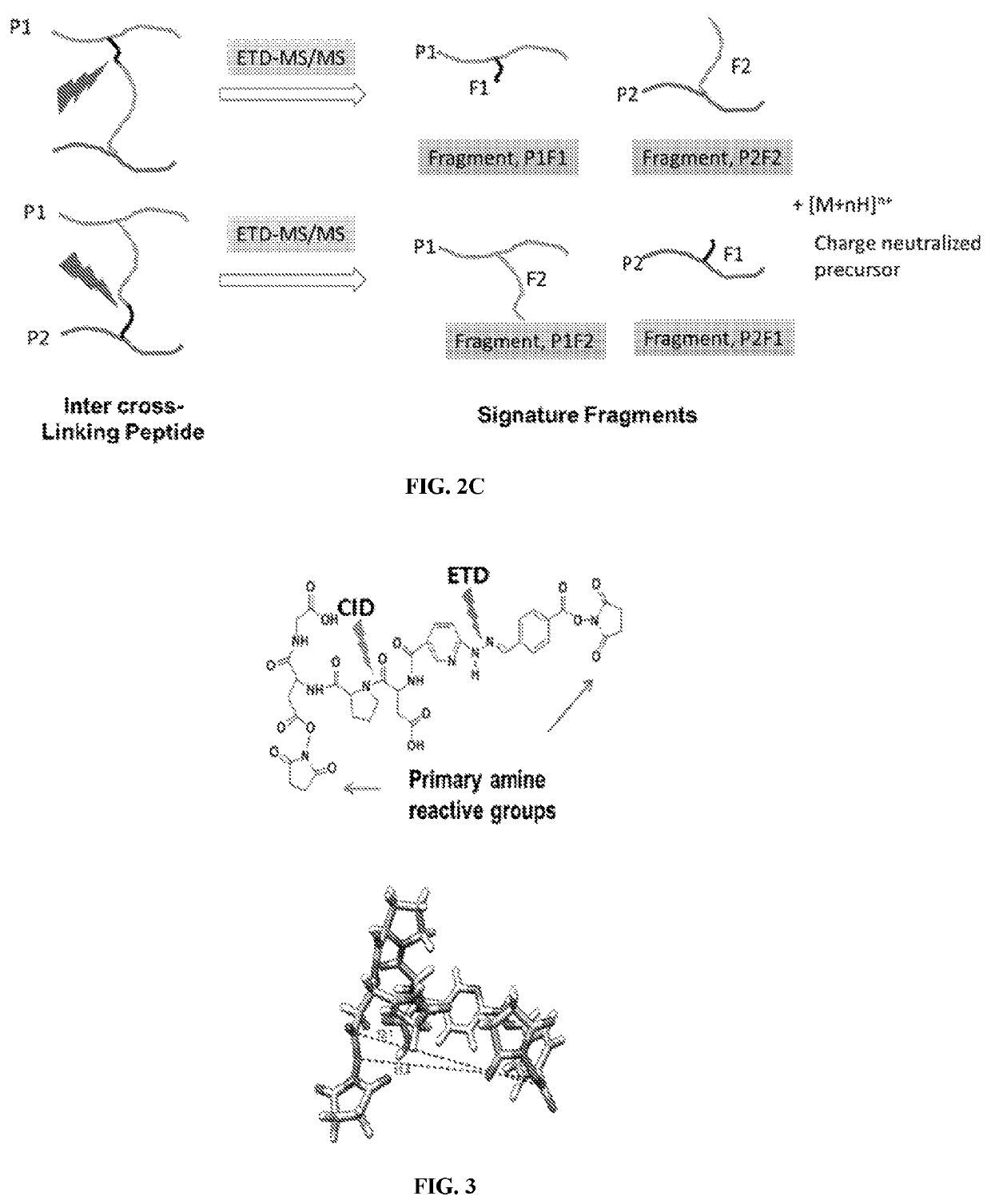Dual mass spectrometry-cleavable crosslinking reagents for protein-protein interactions
a protein-protein interaction and mass spectrometry technology, applied in the field of crosslinking agents, can solve the problems of ineffective analysis of system-level or large-scale protein interaction networks, difficult structure elucidation of large multi-subunit protein complexes, and insufficient x-ray crystallography, etc., to achieve high confidence and produce additional confidence in identification
- Summary
- Abstract
- Description
- Claims
- Application Information
AI Technical Summary
Benefits of technology
Problems solved by technology
Method used
Image
Examples
example 1
of the DUCCT Crosslinker
[0211]The cross linker was synthesized using Fmoc peptide synthesis reagents. The reactive group was used are N-hydroxy succinimide (NHS) for conjugation of lysines. Two gas phase cleavable bonds were added in the design. The first cleavable bond is a pro-asp bond (DP), which is found to be cleaved by low energy CID. The second cleavable bond, nitrogen-nitrogen hydrazone bond, which was reported for ETD cleavage. The CID and ETC cleavable bonds were sandwiched in between two NHS ester reactive groups which finally constituted a lysine reactive crosslinker (FIG. 3).
[0212]The cross linker was synthesized using Fmoc peptide synthesis reagents with an Applied Biosystems 431 Peptide Synthesizer at the 0.25 mmole scale. Fmoc Gly was first coupled to the resin followed by the supersensitive form of Fmoc Asp, Fmoc-Asp(O-2-PhiPr) or Fmoc glycine Wang resin (Anaspec. Inc) was followed by the Fmoc supersensitive Asp. This was then followed by coupling proline and then t...
example 2
e in Crosslinked Peptide Identifications
[0224]An automated software was also developed to analyze this data. Even simple proteins in a LC-MS / MS experiment generate ˜20,000 mass spectra. To test how confidently cross-linked peptides can be identified using two differential cleavages, a theoretical database of cross-linked peptides was generated using precursor and fragment masses. An mgf (contained experimental list of precursors and fragment ions masses) file of experimental LS-MS / MS experiment of crosslinked ubiquitin was also generated. Approximately 30500 mass spectra scans were found in the mgf file. Searching the mgf file with the theoretical cross-linked database identified a list of hits in the CID search. It will require further MS / MS of both cross-linked peptides to receive full confidence on the cross-linked peptides. The mgf file of ETD-MS / MS of the cross-linked ubiquitin was also searched against the theoretical database of cross-linked peptides. Several hits were identi...
example 3
Studies in Cell Lysate
[0226]In order to determine the labeling efficiencies of the DUCCT cross-linkers in pulldown samples, the DUCCT crosslinker cross linker was tested in immune cell macrophages after stimulation with Toll-Like Receptor 4 (TLR4) ligand lipo-polysaccharides (LPS). Raw 264.7 macrophage cells were grown and treated with 1 h LPS-biotin followed by crosslinking with the DUCCT crosslinker and BS3, a commercial crosslinker. After SDS-PAGE separation of samples, in gel digestion was carried out for each gel lane (24 pieces) and LC-MS / MS experiments were performed. The DUCCT cross-linker treated sample identified more proteins compared to its BS3 counterpart (FIG. 16). After careful investigation, a few known interactors were identified for LPS-biotin treated crosslinked samples. CD14, a LPS responsive protein was identified with high spectral counts in the DUCCT crosslinker compared to BS3. No CD14 peptide was identified in the control LPS-biotin treated sample (FIGS. 16,...
PUM
| Property | Measurement | Unit |
|---|---|---|
| molecular weight | aaaaa | aaaaa |
| molecular weight | aaaaa | aaaaa |
| pH | aaaaa | aaaaa |
Abstract
Description
Claims
Application Information
 Login to View More
Login to View More - R&D
- Intellectual Property
- Life Sciences
- Materials
- Tech Scout
- Unparalleled Data Quality
- Higher Quality Content
- 60% Fewer Hallucinations
Browse by: Latest US Patents, China's latest patents, Technical Efficacy Thesaurus, Application Domain, Technology Topic, Popular Technical Reports.
© 2025 PatSnap. All rights reserved.Legal|Privacy policy|Modern Slavery Act Transparency Statement|Sitemap|About US| Contact US: help@patsnap.com



